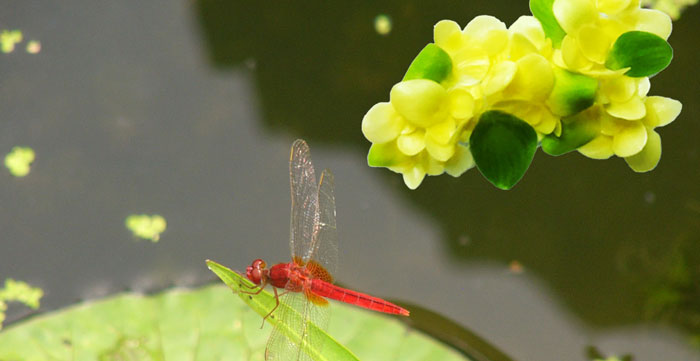
Newsroom
Researchers Reveal Growth Characteristics of Duckweed in Photoautotrophic, Heterotrophic and Mixotrophic Conditions

heterotrophic duckweed (Image by IHB)
Researchers led by Prof. HOU Hongwei from Institute of Hydrobiology (IHB) of Chinese Academy of Sciences have reported that the greater duckweed (Spirodela polyrhiza), a higher plant, exhibits natural metabolic diversity, and is not limited to photoautotrophic growth but can also utilize various organic carbon sources to support heterotrophic and mixotrophic growth.
In the first study of its kind, the research team examined the effects of trophic modes on growth rates, biomass accumulation, physiological and biochemical variations (chlorophyll, starch and protein content), and uptake rates of nutrients and organic carbon of duckweed.
The researchers demonstrated that in heterotrophic conditions, the newly-formed fronds were yellow-white due to a lack of photosynthetic pigment biosynthesis in the dark. The chlorophyll content was lower in duckweed grown mixotrophically than in photoautotrophic conditions.
This result suggested that mixotrophic growth may attenuate the photosynthetic potential of duckweed plants compared to that of those grown photoautotrophically. The mixotrophic growth rate was 4.98 and 6.22 times higher than that in heterotrophic and photoautotrophic conditions, respectively.
Notably, mixotrophy produced more biomass than the simple sum of that accumulated during heterotrophy or photoautotrophy alone, suggesting a clear synergistic effect on yield by the addition of an organic carbon source to photoautotrophic growth conditions.
However, the precise mechanism needs further study, including the relationship between chloroplasts and mitochondria, photosynthesis and respiration, and energy flow and carbon distribution.
Intriguingly, mixotrophic duckweed achieved the greatest starch yield but had lower starch content than in heterotrophy. Therefore, the researchers recommend a strategy of a combination of heterotrophy and mixotrophy for gaining maximum starch-enriched biomass production.
Moreover, mixotrophically grown duckweed had greatly enhanced uptake of nutrients and organic carbon from the medium than in other trophic conditions.
Duckweeds (Lemnoideae) are a group of higher aquatic plants, belonging to the Araceae and commonly found in various freshwater habitats. They have been extensively studied as model plants in both theoretical research (photosynthesis, morphogenesis and evolution) and industrial applications (bioenergy production, wastewater treatment, food, feed and bioreactors).
The prerequisite for these applications is that duckweed could quickly accumulate a large amount of biomass (such as starch or protein). Optimizing cultivation strategies to attain high biomass production is therefore essential for reducing the cost of duckweed bioprocessing.
This study creates a paradigm for future studies of duckweed-based biomass (starch and protein) production and organic wastewater treatment. The metabolic diversity of duckweed may provide new insights for research on the metabolism of higher plants and lay a foundation for further study of the photosynthetic mechanism.
This study was recently published online in the journal “Bioresource Technology”.

(Image by IHB)

(Image by IHB)
Contact:
Prof. HOU Hongwei
Research Group of Aquatic Plant Physiology
Institute of Hydrobiology, Chinese Academy of Sciences
E-mail: houhw@ihb.ac.cn